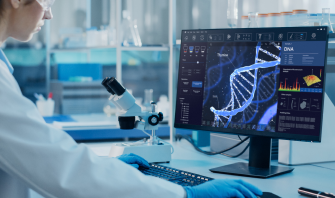
3D Cell Culture – From Organoids to Organ Models
3D cell cultures are evolving rapidly, offering increasingly complex systems that closely mimic the structure, microenvironment, and physiological functions of human organs and tissues. These models enable the study of spatial cell organization, organ and disease development, and provide powerful tools for drug screening, toxicity assessment, and transplantation research.
By combining relevant cell types, media, extracellular matrices or bioprinted structures, researchers can simulate natural environments with high accuracy. To date, numerous models of human tissues and organs, both in healthy and diseased states, have been successfully developed.
These include:
| · Bone marrow organoids [1] | · Prostate organoids [7] |
| · Breast cancer-on-chip [2] | · Renal proximal Tubule-on-a-Chip [8] |
| · Cerebral organoid cultures [3] | · Skin: 3D Models [9], Chips [10] & Open-Top Chip [11] |
| · Colon organoids [4] | · Tumoroid-on-a-Plate [12] |
| · Fibrosis model [5] | · Vagina [13, 14] and Cervix Chips [14] |
| · Kidney Chip [6] |
Solutions from CellSystems®
CellSystems offers high-quality products suited for 3D cell culture applications:
References:
[1] Olijnik, A., et al. Nature Protocols, 19(7), 2024, 2117–46.
[2] Maulana, T., et al. Cell Stem Cell, 31(7) 2024, 989-1002.e9.
[3] Donadoni, M., et al. Journal of NeuroVirology, 2024.
[4] Mitrofanova, O., et al. Cell Stem Cell, 31(8), 2024, 1175-1186.e7.
[5] Petrachi, T., et al. Biomedicine & Pharmacotherapy, 165, 2023, 115146.
[6] Mou, X., et al. Science Advances, 10(23), 2024, eadn2689
[7] Xie, L., et al. Environmental Health Perspectives, 128(6), 2020, 067008.
[8] Nie, J., et al. Advanced Science, 11(30), 2024, 2400970.
[9] Chettouh-Hammas, N., et al. Ed N. Ismail. Oxidative Medicine and Cellular Longevity. 2023, 1–15.
[10] Sun, S., et al. Nature Communications, 13(1), 2022, 5481.
[11] Varone, A., et al. Biomaterials, 275, 2021, 120957.
[12] Seyfoori, A. et al. bioRxiv preprint, 2024
[13] Mahajan G, et al. Microbiome. 2022, 26;10(1):201.
[14] Gutzeit, O. et al. Systems Biology, 23, 2023.

